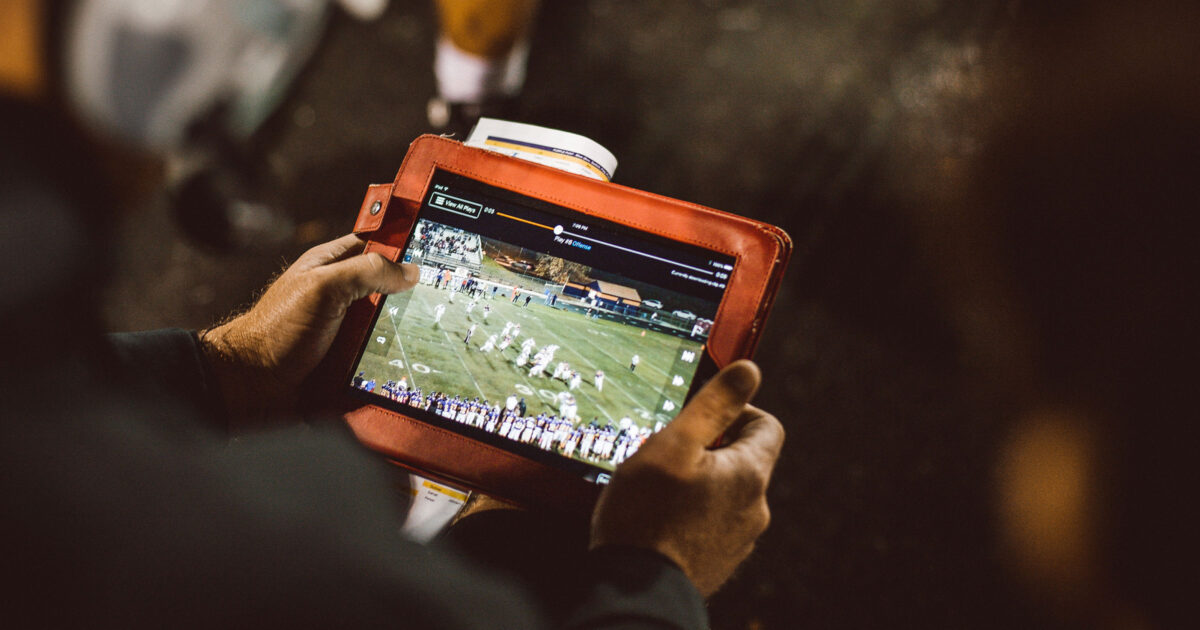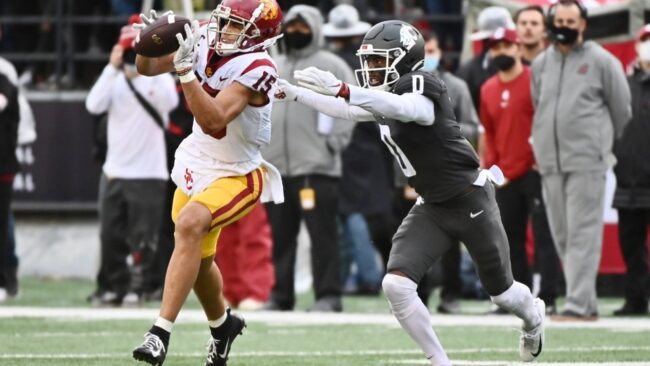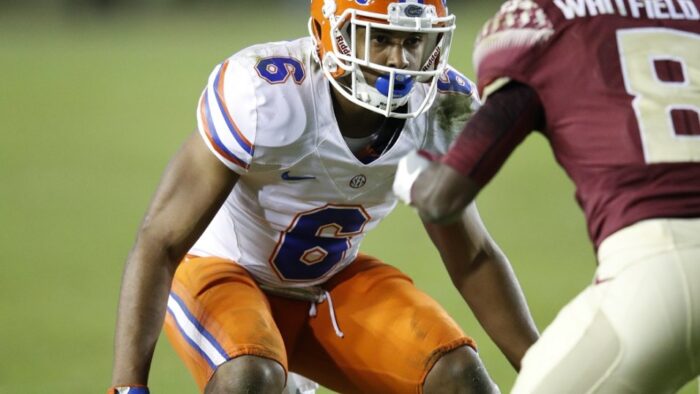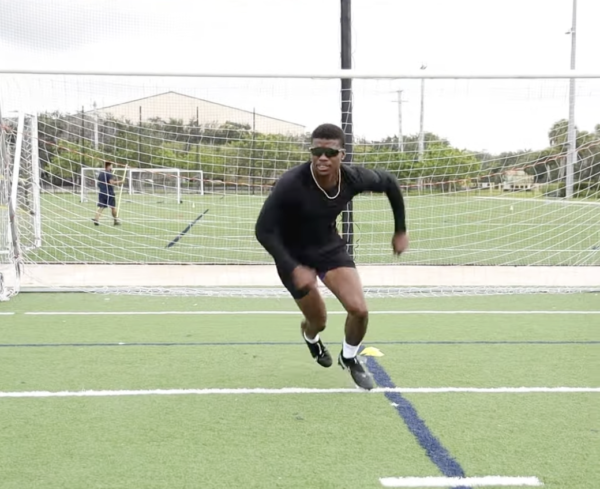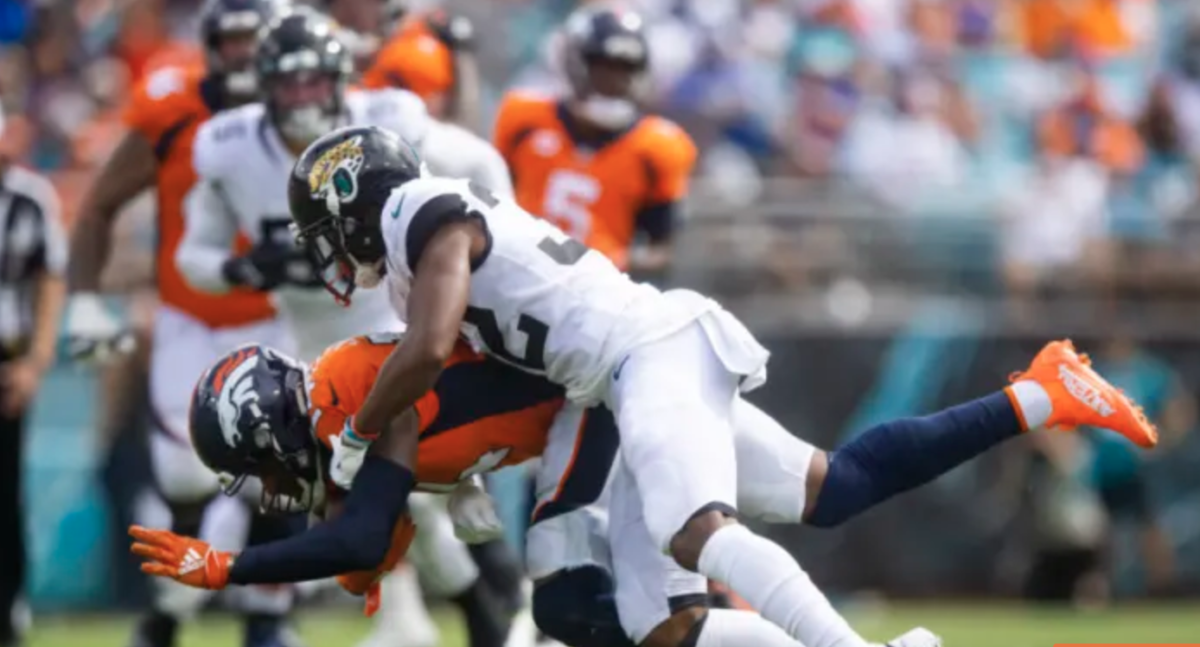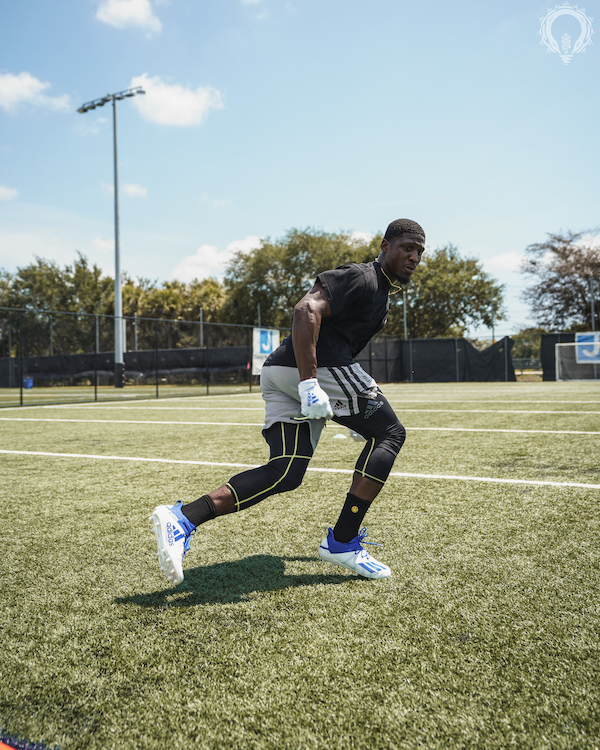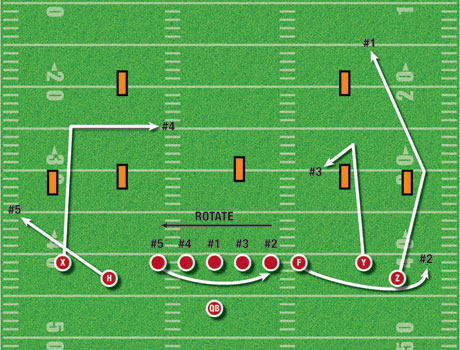With the recent passing of the NFL Combine and all of the hoopla surrounding the 40-yard dash, I thought it would be a good time to reflect on some of the fastest defensive backs that have suited up to play in the NFL.
While any top 10 list can be debated and there are certainly several factors that go into gauging speed, I have compiled this list to display players according to their 40-yard dash times. The data used for this list is based on the article on Gridironstuds.com, one of the most widely read articles on the internet pertaining to this topic.
With that in mind, here are the top 10 fastest defensive backs in NFL history:
#10 James Williams (Buffalo Bills) – 4.29
James Williams was a first-round pick of the Buffalo Bills in 1990 after a standout career as a Fresno State Bulldog in college. Williams was known for his aggressive bump-and-run coverage both in college and as a professional. He was also known for having great speed. Upon coming out for the 1990 NFL Draft, Williams blazed a 4.29 40, impressing scouts and no doubt catapulting him up the draft ranks. In his four seasons as a Bill, Williams and Nate Odom combined to be a formidable cornerback duo that played a solid part in the Bills getting to four straight Super Bowls.
#9 DeMarcus Van Dyke (Oakland Raiders) – 4.28
DeMarcus Van Dyke spent seven years in the NFL playing for various teams. He was a third-round selection by the Oakland Raiders after a solid college career at the University of Miami. Over the years, the Miami Hurricanes have produced many speed demons, and Van Dyke may be at the top of them. While at the University of Miami, Van Dyke posted top times of 6.81 seconds in the 60m and 10.61 in the 100 meters. At the 2011 NFL Combine, Van Dyke wowed all in attendance with his 4.28 time in the 40-yard dash. Van Dyke’s blistering time caught the attention of the Raiders, as they have historically been known to acquire speed on their rosters. He would go on to play for the Pittsburgh Steelers, Kansas City Chiefs, Minnesota Vikings, and Atlanta Falcons before retiring in 2016.
#8 Champ Bailey (Washington Redskins) – 4.28
Champ Bailey is another defensive back with a long list of accolades, including the highest honor of being inducted into the Pro Football Hall of Fame. His play on the NFL gridiron is legendary. In his career, he grabbed 52 interceptions and defended 203 passes. There’s no doubt that his physical skills played a big part in his on-field success. He competed in track while in college at the University of Georgia. He recorded a best time of 6.85 seconds in the 60m dash. He was also a standout long jumper. All of this led to his outstanding performance at the 1999 NFL Combine at which he ran a 4.28 40-yard dash. Speed and production as a Georgia Bulldog led to Bailey being the seventh overall pick by the Washington Redskins in the 1995 NFL Draft.
#7 Rod Woodson (Pittsburgh Steelers) – 4.28
Rod Woodson’s NFL career as a defensive back stands as one of the best ever. His accolade list is long, and we won’t go into it in this article. Just know that he is near the top of the all-time NFL career interception list with 71 and he is a member of the Pro Football Hall of Fame. However, in terms of speed, it should be noted that Woodson was a standout track performer at Purdue University, where he attended college. Woodson posted top times of 7.61 in the 60m hurdles, 6.70 in the 60m, 10.26 in the 100m, and 13.29 in the 110m hurdles. Woodson also qualified for the Olympic trials in 1984 for the 110m hurdles. He also held the NCAA 60m hurdles record for 10 years. However, it was Woodson’s 4.28 40-yard dash that dazzled scouts and turned him into the overall selection in the 1987 NFL draft. Woodson would also go on to compete several times in the NFL’s fastest man competition.
#6 D.J. Turner (Cincinnati Bengals) – 4.26
DJ Turner was a second-round pick by the Cincinnati Bengals in the 2023 NFL Draft. Turner represents a new era of athletes who have mastered running the 40-yard dash. His seemingly effortless 4.26 time at the 2023 NFL Combine opened up eyes and lifted him up the draft boards. His athletic talents and speed are highly coveted in today’s game as offenses provide new challenges in the passing game for defenses. Turner enjoyed a solid rookie season in 2023 with 50 tackles, seven pass breakups, and one fumble recovery.
#5 Tariq Woolen (Seattle Seahawks) – 4.26
Tariq Woolen’s size and speed combo are unlike anything that has been seen in the NFL before. He is not the first NFL defensive back to run a sub-4.3 forty-yard dash. However, he is the first to do so while standing at 6‘4“ tall. Woolen began his college football career as a wide receiver before moving to defense in his redshirt sophomore year. He enjoyed a humble five-year career at UTSA. When Woolen checked in at the NFL Combine at 6‘4“ tall weighing 205 pounds, he grabbed the attention of many when he proceeded to run the 40-yard dash in 4.26 seconds; all eyes were on him. Perhaps thought of as a potential undrafted free agent going into the combine, Woolen upped his profile and ended up becoming a fifth-round pick by the Seattle Seahawks. He would parlay that into an outstanding rookie season with six interceptions, including a pick-six, and 16 passes defensed.
#4 Sam Shields (Green Bay Packers) – 4.25
Shields is the second former Miami Hurricane to appear on this list. He enjoyed a nine-year NFL career despite going undrafted in the 2010 NFL Draft. Shields was an athletic player with many talents while in college, but he was also a player without a position. While at the University of Miami, he spent time on both sides of the ball as a wide receiver and cornerback. Well known for his speed, Shields had a personal best time of 10.47 in the 100m dash. Upon declaring for the NFL Draft, Shields had scouts rechecking their watches when he came through the line in a time of 4.25 seconds in the 40-yard dash. Shields would parlay his athletic skill into 19 career interceptions as a pro and a Super Bowl ring with the Green Bay Packers.
#3 Ike Taylor (Pittsburgh Steelers) – 4.25
Perhaps you would not have expected to see this name this high up on the list. Taylor is not a well-known defensive back for youngsters who make up the NFL fan base. However, Taylor is one of the fastest players to have played in the league. Taylor was a fourth-round pick by the Pittsburgh Steelers in the 2003 NFL draft. He did not have an illustrious college career. He started off as a running back and was eventually moved to cornerback in his senior season at Louisiana Lafayette. Though he
did not record an interception in that season, Taylor did not allow an opponent to catch a pass while in man coverage. He was not highly thought of coming out, but when he ran a 4.25 40-yard dash, the Steelers paid attention. Despite heavy criticism for selecting Taylor, an inexperienced player at the position, the Steelers enjoyed 12 years of Taylor’s service at cornerback. He would be a solid part of some of the best defenses in the era and captured a pair of Super Bowl victories during his career.
#2 Deion Sanders (Atlanta Falcons) – 4.21
I’m not sure what’s more legendary, Prime Time’s play on the field or the tales of his speed. There was the time at Florida State that Sanders played in a baseball game, headed over to the track, and ran the relay in baseball pants before heading back over to the diamond for a second game of a doubleheader. Sanders, who has been quoted as saying he can run a 4.3 for breakfast, ran one of the most legendary 40-yard dashes in combine history. It was well known that Sanders could run. He had a personal best of 10.21 in the 100 meters while at Florida State. At the combine, he would blaze through the line at 4.21 and continue out of the building telling all in attendance he would see them on draft day. During his Hall of Fame NFL career, Sanders would put his speed on display countless times. It was high-stepping with pick-sixes for seemingly half the field or running down 4.3 speedsters like Don Beebe on special teams. Prime Time’s speed was always in your face. He is considered one of the best athletes to have ever played professional sports.
#1 Darrell Green (Washington Redskins) – 4.15
There is football speed, and then there is what Darrell Green had. Green was perhaps the fastest player to ever play in the NFL. His run-downs were legendary. Hall of Fame running backs Tony Dorsett and Eric Dickerson, both speedsters in their own right, were victims. Green posted a top time of 10.08 in the 100m while in college at Texas A&M – Kingsville. He also posted times of 20.50 in the 200m and 45.90 in the 400m. He also once defeated track and field Hall of Famer Carl Lewis in a 100m dash. Green’s 20-year Pro Football Hall of Fame career was spent entirely in Washington, playing for the Redskins. He was a big part of the Redskins’ success in the 80s and 90s. During this time, he was a two-time Super Bowl champion. Green also entered into the NFL’s fastest man competition four times during his career. He never lost in that competition. Coming out of college, Green ran a 4.15 forty-yard dash and solidified himself as a first-round pick. He was taken 28th overall by the Redskins in 1983. In the year 2000, as a 40-year-old NFL vet, Green came to camp and ran a 4.3 forty-yard dash for the coaching staff. It will be a long time before we find another Darrell Green when it comes to speed.
I hope you guys enjoyed this list. I am sure some of it is debatable, but when it comes to numbers one and two on this list, there is no real debate. For reference on some of the top 40-yard dash times that have ever been run by any player from any position, check out the article on Gridironstuds.com by clicking here.


